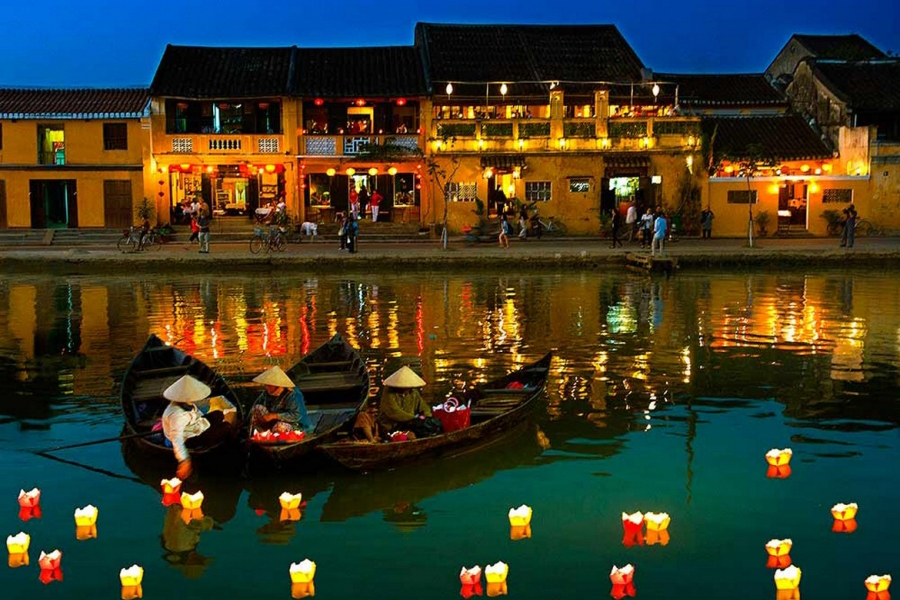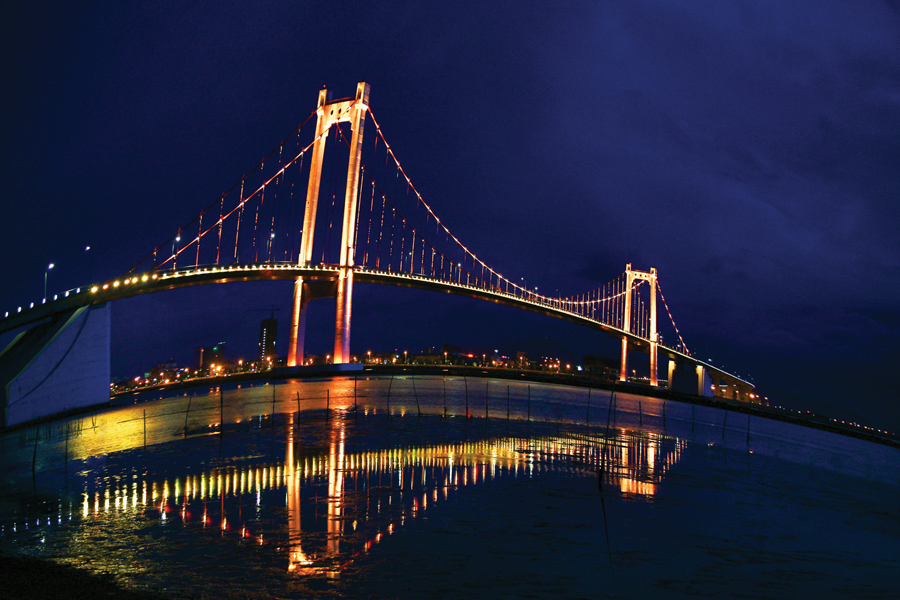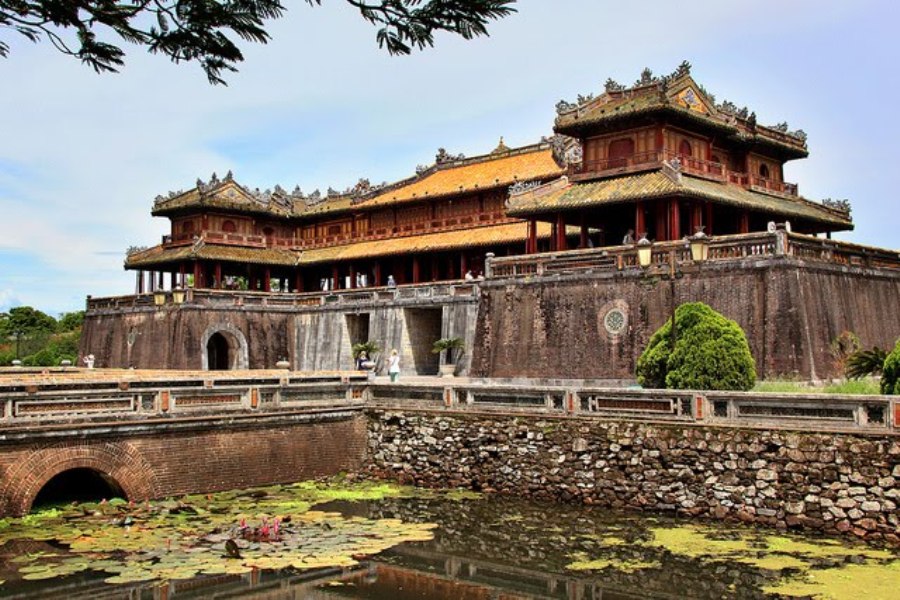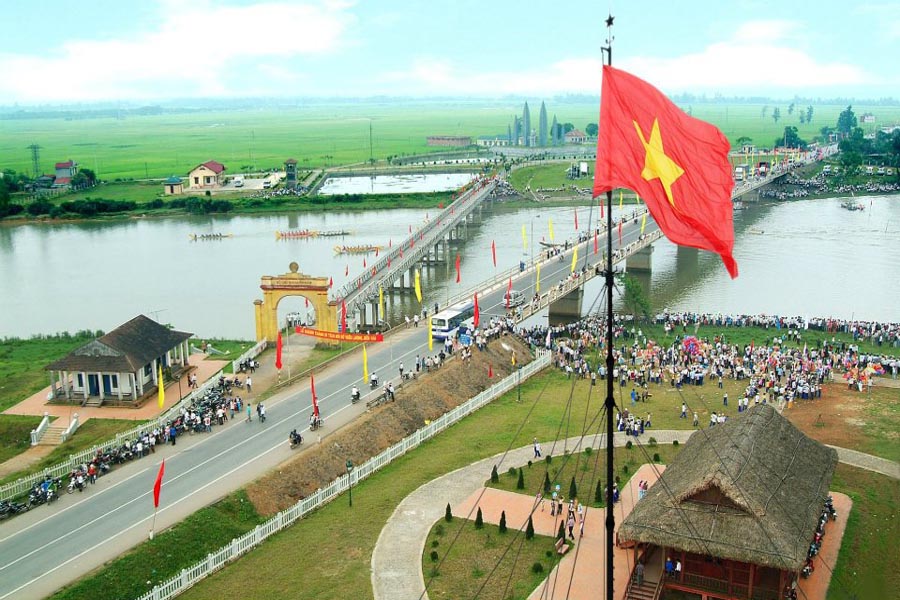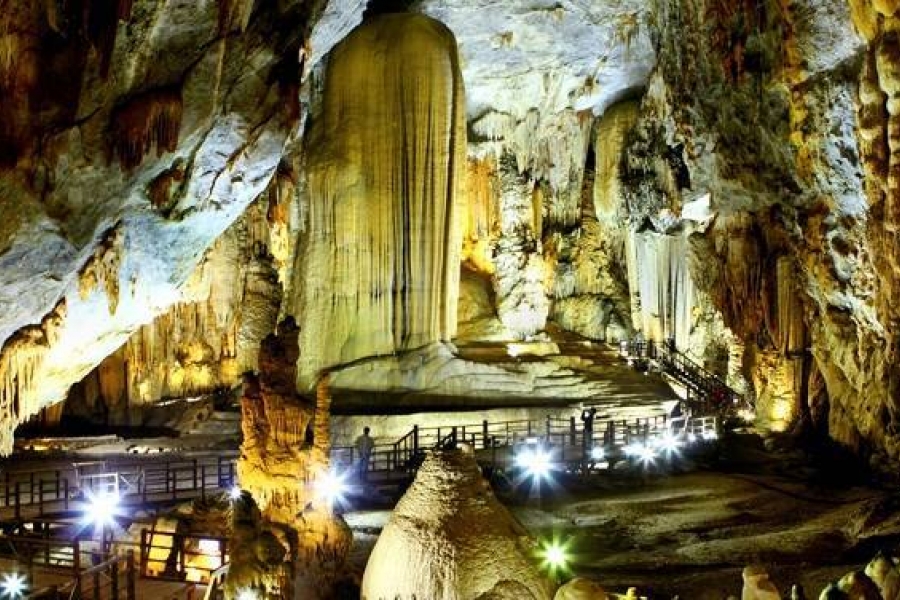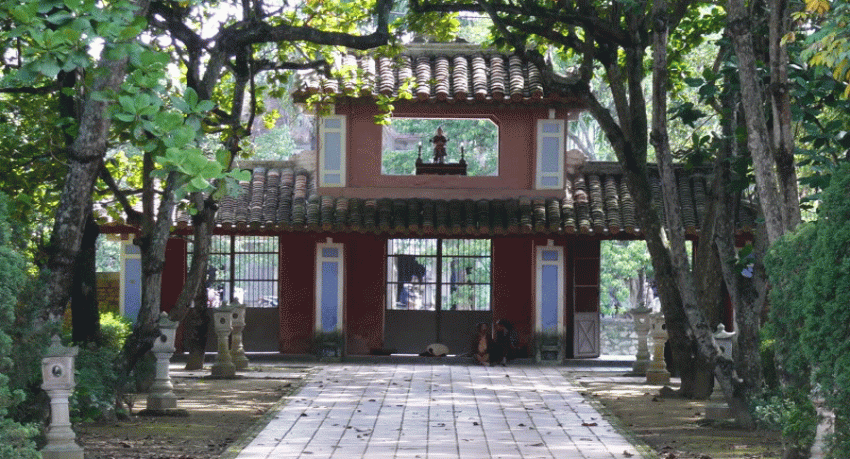Mentioning Dieu De Pagoda, all of the Hue people remember and fell proud of the following verses:
Dong Ba, Gia Hoi the two bridges
Facing Dieu De with four towers and two bells
0r
Dong Ba, Gia Hoi – the two bridges
Facing Dieu De with drum shelter and bell tower
Dieu De is one of the three “national pagodas” in Hue and was considered by Emperor Thieu Tri one of the twenty beauty spots of the old holy capital. Emperor Thieu Tri had the pagoda erected on a large scale in 1842 – 1844 during the first few years of his reign on land where the Emperor was born.
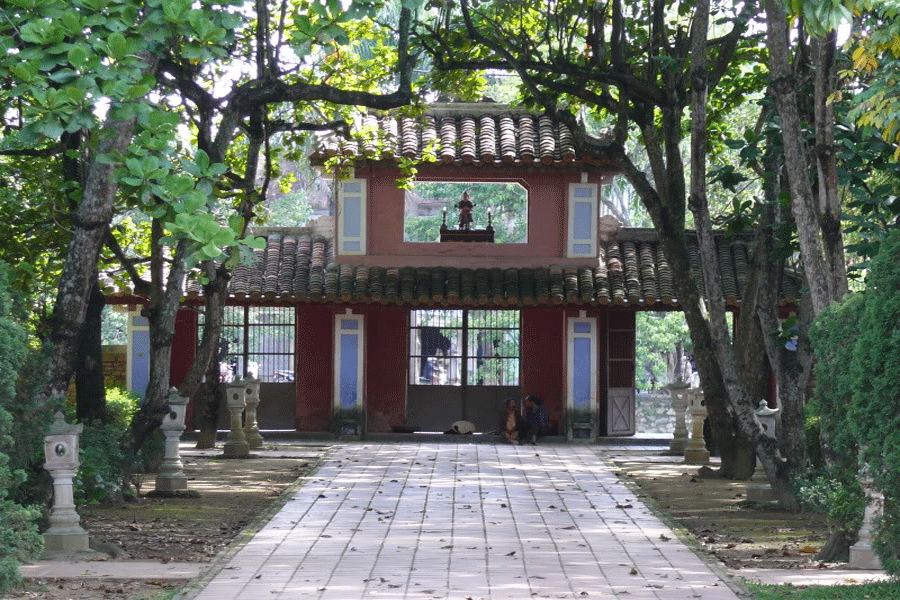
Dieu De Pagoda now is in Phu Cat district. Its location is among four streets: in the front is Bach Dang street running along a branch of the Perfume River, in he back is To Hien Thanh street near Dieu Hy Pagoda, on the left is the street named after the pagoda (Dieu De) and on the right is Chua Ong street. The name of the pagoda and all temples, roads and fowers were given by Thieu Tri himself. The original architecture of the pagoda is methodical – Though it is not as beautiful as Thien Mu pagoda, Dieu De pagoda has its own unique beauty: there are four towers, two towers, two bell towers, one drum tower and one stele tower. The main temple is the sanctuary, on the left and right are meditation temples. The Dai Nguyen tower with two floors and three rooms was built in front of the temple. Behind Dao Nguyen tower there are two drum and bell towers symmetriccally built on both sides and Ho Phap tower standing in the middle. The surrounding wall is in the inneryard the two octagonnal houses are in the front yard. The Hong Chung (big bell) is put on the left, the big stele on which the article written by Thieu Tri was engraved is on the right.
The system of walls surrounding the pagoda is of durable and mangnificent proportion; in the front there stand three gates Phuong Mon, two small gates on both sides, by the river side there exists a wharf with about ten steps.
In the old time, Dieu De pagoda possessed many Buddha statues which were transferred from Giac Hoang pagoda after the event of “the fall of the city” (1885). At the end of that year, the south court set up at Cat Tuong temple, Thua Thien district at Tri Tue pavilion, and a prison at a monks’ room, an office for Kham Thien Giam at another mnks’ room. The pagoda was not just only the place for Buddha worship. In 1885, most of the roooms of the pagoda was demolished. After that, outside the gate of the surrounding wall, four more pillars were built.
In 1960, when movements of Buddhist struggle against Die’s Government developed, Dieu De was a place to concentrate the force so the architectural surface was changed the pillars were demolished, the back yard was made as even as the front yard to enlarge the rostrum.
In 1964 Buddha Primary school, which was founded by Buddhist teachers, erected a row of class-rooms on the right of the pagoda. In 1966, another Lam Ti Ni Buddha Enlightenment School was built by the nuns of Dieu Vien pagoda. The appearance of Dieu De pagoda has changed a lot.
At present, only the main temple is left, on both sides are bat Ho Kim Cang, In the back is a living room and a kitchen. In the front yard are stele shelter and bell shelter. Outside is the triple gate (Tam Quan) of two floors, with Ho Phap tower on top. In the back yard are four small walls and a pair of unicorns lying on either side the entrance.
Copyright by Phong Nha Pioneer Travel
Categories: Blog

